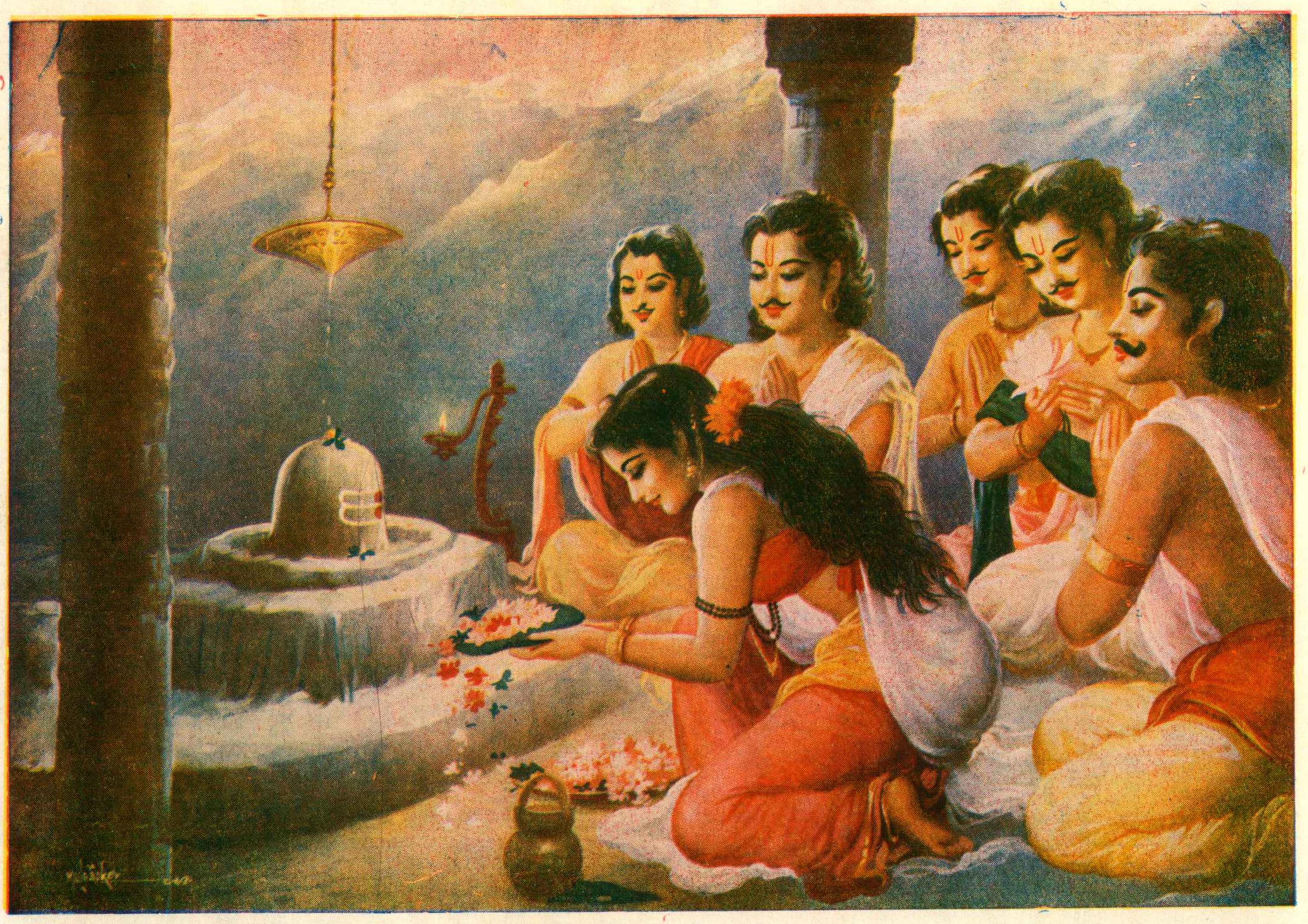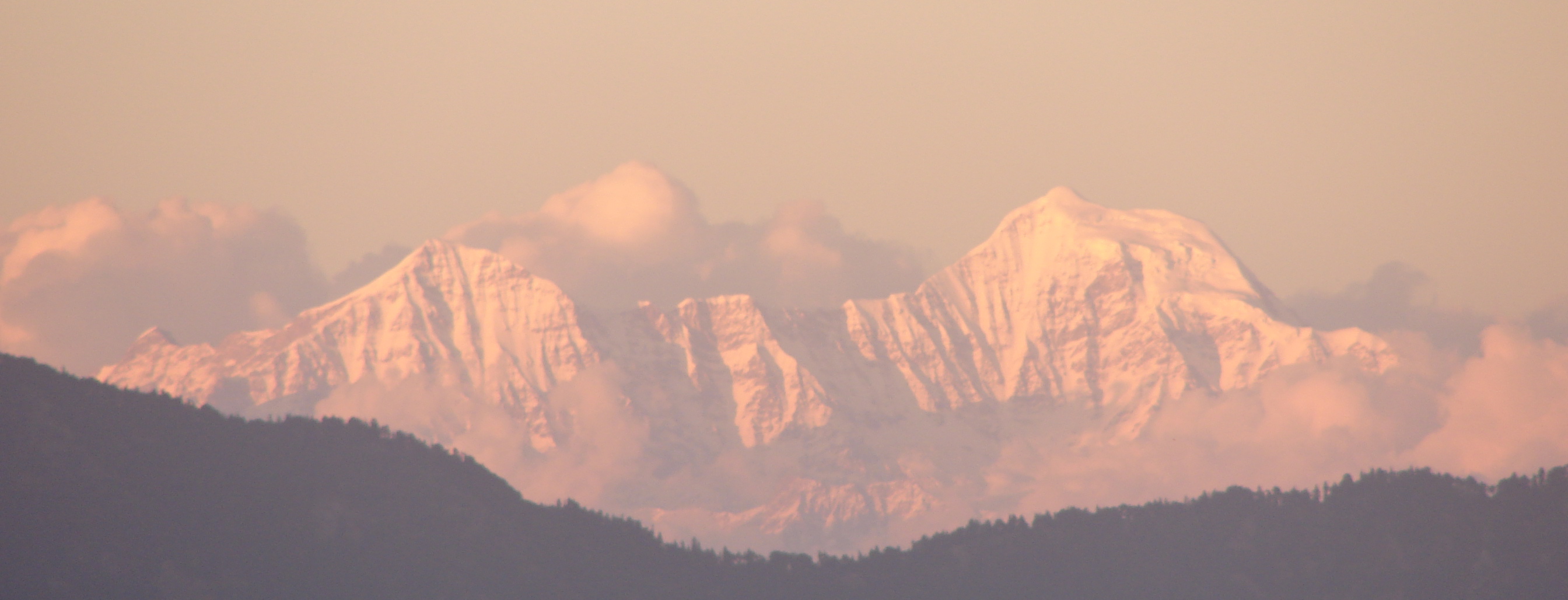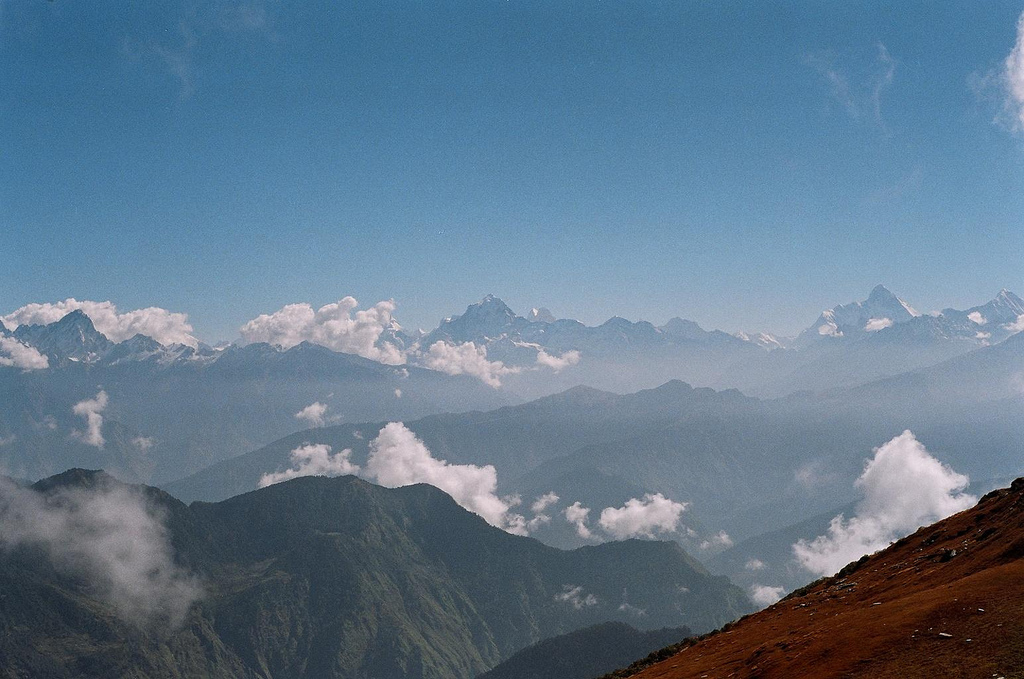|
Madhyamaheshwar
Madhyamaheshwar ( sa, मध्यमहेश्वर) or Madmaheshwar is a Hindu temple dedicated to Shiva, located in Gaundar, a village in the Garhwal Himalayas of Uttarakhand, India. Situated at an elevation of , it is one of the Panch Kedar pilgrimage circuits, comprising five Shiva temples in the Garhwal region. The other temples in the circuit include: Kedarnath, Tungnath and Rudranath which are culturally visited before Madhyamaheshwar and, Kalpeshwar generally visited after Madhyamaheshwar. The middle (''madhya'') or belly part or navel (''nabhi'') of Shiva is worshipped here. The temple is believed to have been built by the Pandavas, the central figures of the Hindu epic Mahabharata. Legend Several folk legends exist surrounding the Garhwal region, Shiva and the creation of the Panch Kedar temples. One folklore relates to the Pandavas, the heroes of the Hindu epic Mahabharata. The Pandavas defeated and slayed their cousins — the Kauravas in the epic Kurukshetra ... [...More Info...] [...Related Items...] OR: [Wikipedia] [Google] [Baidu] |
Panch Kedar
Panch Kedar ( sa, पञ्चकेदार) refers to five Hindu temples or holy places of the Shivaite sect dedicated to god Shiva. They are located in the Garhwal Himalayan region in Uttarakhand, India. They are the subject of many legends that directly link their creation to Pandavas, the heroes of the Hindu epic Mahabharata. The five temples designated in the strict pecking order to be followed for pilgrimage for worship are the Kedarnath Temple ( sa, केदारनाथ) at an altitude of , the Tungnath Temple (तुङ्गनाथ)(), the Rudranath Temple (रुद्रनाथ) (), the Madhyamaheshwar Temple (मध्यमहेश्वर) or Madmaheshwar () and the Kalpeshwar Temple (कल्पेश्वर) (). The Kedarnath is the main temple, which is part of four Chota Char Dhams (literally 'the small four abodes/seats') or pilgrimage centers of the Garhwal Himalayas; the other three dhams are the Badrinath, Yamunotri and Gangotri. ... [...More Info...] [...Related Items...] OR: [Wikipedia] [Google] [Baidu] |
Kedarnath Temple
Kedarnath Temple (Sanskrit: केदारनाथ मंदिर, IAST: ''Kēdāranātha Mandira'', ) is a Hindu temple roughly 1200 years old dedicated to Shiva. The temple is located on the Garhwal Himalayan range near the Mandakini river, in the state of Uttarakhand, India. Due to extreme weather conditions, the temple is open to the general public only between the months of April ( Akshaya Tritiya) and November (Kartik Purnima, the autumn full moon). During the winters, the ''vigraha'' (deity) of the temple is carried down to Ukhimath to be worshipped for the next six months. Kedarnath is seen as a homogenous form of Shiva, the 'Lord of Kedarkhand', the historical name of the region. The temple is not directly accessible by road and has to be reached by a uphill trek from Gaurikund. Pony, mule and ''manchan'' service is available to reach the temple. According to Hindu legends, the temple was initially built by the Pandavas, and is one of the twelve Jyotirlingas, the ho ... [...More Info...] [...Related Items...] OR: [Wikipedia] [Google] [Baidu] |
Kalpeshwar
Kalpeshwar ( sa, कल्पेश्वर) is a Hindu temple dedicated to Shiva located at an elevation of in the picturesque Urgam valley in the Garhwal region of Uttarakhand state in India. The temple's ancient legend linked to the Pandavas, heroes of the epic Mahabharata, is the fifth temple of the Panch Kedar (five temples) of Shiva's five anatomical divine forms; the other four temples in the order of their worship are Kedarnath, Rudranath, Tungnath and Madhyamaheshwar temples; all in the Kedar Khand region of the Garhwal Himalayas. Kalpeshwar is the only Panch Kedar temple accessible throughout the year. At this small stone temple, approached through a cave passage, the matted tress (''jata'') of Lord Shiva is worshipped. Hence, Lord Shiva is also called as Jatadhar or Jateshwar. Earlier it was approachable only by trek from the nearest road head of Helang on the Rishikesh-Badrinath road but now the road goes up to Devgram village from where the trek now is just 300 ... [...More Info...] [...Related Items...] OR: [Wikipedia] [Google] [Baidu] |
Rudranath
Rudranath ( sa, रुद्रनाथ) is a Hindu temple dedicated to God Shiva, located in the Garhwal Himalayan mountains in Uttarakhand, India. Located at above sea level, this natural rock temple is situated within a dense forest of rhododendron dwarfs and Alpine pastures. The temple is the third temple to be visited in the Panch Kedar pilgrimage circuit, comprising five Shiva temples in the Garhwal region to be visited in a strict pecking order starting with Kedarnath (Sanskrit: केदारनाथ) at an altitude of 3,583 m (11,755 ft), the Tungnath (तुंगनाथ)(3,680 m or 12,070 ft), Rudranath (रुद्रनाथ) (3,550 m or 11,500 ft), Madhyamaheshwar (मध्यमहेश्वर) (3,490 m or 11,450 ft) and Kalpeshwar (कल्पेश्वर) (2,200 m or 7,200 ft). The face (''mukha'') of god Shiva is worshipped as "Neelakantha Mahadeva" here. The trek starts from Sagar Village which is approximately 3 km away from Gopeshwar. The ... [...More Info...] [...Related Items...] OR: [Wikipedia] [Google] [Baidu] |
Kedarnath
Kedarnath is a town and Nagar Panchayat in Rudraprayag district of Uttarakhand, India, known primarily for the Kedarnath Temple. It is approximately 86 kilometres from Rudraprayag, the district headquarter. Kedarnath is the most remote of the four Chota Char Dham pilgrimage sites. It is located in the Himalayas, about above sea level near the Chorabari Glacier, which is the source of the Mandakini river. The town is flanked by snow-capped peaks, most prominently the Kedarnath Mountain. The nearest road head is at Gaurikund about 16 km away. The town suffered extensive destruction during June 2013 from the Flash Floods caused by torrential rains in Uttarakhand state. Etymology The name "Kedarnath" means "the Lord of the Field". It is derived from the Sanskrit words ''kedara'' ("field") and ''natha'' ("lord"). The text ''Kashi Kedara Mahatmya'' states that it is so-called because "the crop of liberation" grows here. History Kedarnath has been a pilgrimage centre since an ... [...More Info...] [...Related Items...] OR: [Wikipedia] [Google] [Baidu] |
Guptakashi
Guptakashi, Gupta Kashi or Guptkashi is a fairly large town located at an elevation of in the Kedar-khanda ('khanda' means "sector"), in Garhwal Himalayas of Rudraprayag district in Uttarakhand, India. It is known for its ancient Vishwanath Temple dedicated to the god Shiva, which is similar to the one in Varanasi (Kashi). The other well known temple here is dedicated to Ardhanareshvara, a half man half woman form of Shiva and Parvati. The name Guptakashi has legendary significance linked to the Pandavas, the heroes of the Hindu epic ''Mahabharata''. Its religious importance is considered next to that of Varanasi, believed to be the most pious of all Hindu pilgrimage sites. The temple town is located on the way to the Kedarnath, one of the Chota Char Dhams and Panch Kedars. It has the scenic backdrop of the snow-covered peaks of Chaukhamba and enjoys a salubrious weather throughout the year. Legend Popularly-narrated legend holds that subsequent to the Kurukshetra war of the e ... [...More Info...] [...Related Items...] OR: [Wikipedia] [Google] [Baidu] |
Tungnath
Tungnath ( IAST:tuņgnāth) is one of the highest Shiva temples in the world and is the highest of the five Panch Kedar temples located in the Rudraprayag district, in the Indian state of Uttarakhand. The Tungnath (literal meaning: Lord of the peaks) mountains form the Mandakini and Alaknanda river valleys. It is located at an altitude of , and just below the peak of Chandrashila. It has a rich legend linked to the Pandavas, heroes of the Mahabharata epic. Legend According to Hindu mythology, Shiva and his consort, Parvati both reside in the Himalayas: Shiva resides at Mount Kailash. Parvati is also called Shailaputri, which means 'Daughter of the Mountain'. Many folk legends related to the Garhwal region, Shiva and the creation of the Panch Kedar temples are narrated. A folk legend about Panch Kedar relates to the Pandavas, the heroes of the Hindu epic Mahabharata. The Pandavas defeated and slayed their cousins — the Kauravas in the epic Kurukshetra war. They wished t ... [...More Info...] [...Related Items...] OR: [Wikipedia] [Google] [Baidu] |
Brāhmanahatya
Brāhmanahatya (also known as Brahma Hatya) is the Sanskrit term for "the act of killing a Brahmin". A brahmin who is learned is considered an embodiment of the knowledge he possesses; killing such a person is tantamount to destroying knowledge—- the greatest sin a being can ever commit. Legend In a story involving Indra and Vritra, Brāhmahatya is portrayed as a hideous crime. The killer and his/her descendants thereafter bear a curse. It is not limited to the killing of a Brahmin but extends to the harming or killing of all those creatures that may be considered sacred and equivalent to a Brahmin. Hindu scriptures prescribe ''japa'', ''tapa'', ''homa'', yagya, tarpan, '' shradh kriya'' and '' Brahma dosha nivarana pooja'' as means to get rid of the curse. '' Triambaka pooja'' at Triyambakeshwara and pinda daan at Gaya are also suggested. The Tiruvidaimaruthur Shiva temple has an idol for Brahmahatya and the legend of this temple is associated with the curse. The ... [...More Info...] [...Related Items...] OR: [Wikipedia] [Google] [Baidu] |
Brahmin
Brahmin (; sa, ब्राह्मण, brāhmaṇa) is a varna as well as a caste within Hindu society. The Brahmins are designated as the priestly class as they serve as priests (purohit, pandit, or pujari) and religious teachers (guru or acharya). The other three varnas are the Kshatriya, Vaishya and Shudra. The traditional occupation of Brahmins is that of priesthood at the Hindu temples or at socio-religious ceremonies, and rite of passage rituals such as solemnising a wedding with hymns and prayers.James Lochtefeld (2002), Brahmin, The Illustrated Encyclopedia of Hinduism, Vol. 1: A–M, Rosen Publishing, , page 125 Traditionally, the Brahmins are accorded the highest ritual status of the four social classes. Their livelihood is prescribed to be one of strict austerity and voluntary poverty ("A Brahmin should acquire what just suffices for the time, what he earns he should spend all that the same day"). In practice, Indian texts suggest that some Brahmins historicall ... [...More Info...] [...Related Items...] OR: [Wikipedia] [Google] [Baidu] |
Varanasi
Varanasi (; ; also Banaras or Benares (; ), and Kashi.) is a city on the Ganges river in northern India that has a central place in the traditions of pilgrimage, death, and mourning in the Hindu world. * * * * The city has a syncretic tradition of Muslim artisanship that underpins its religious tourism. * * * * * Located in the middle-Ganges valley in the southeastern part of the state of Uttar Pradesh, Varanasi lies on the left bank of the river. It is to the southeast of India's capital New Delhi and to the east of the state capital, Lucknow. It lies downstream of Allahabad (officially Prayagraj), where the confluence with the Yamuna river is another major Hindu pilgrimage site. Varanasi is one of the world's oldest continually inhabited cities. Kashi, its ancient name, was associated with a kingdom of the same name of 2,500 years ago. The Lion capital of Ashoka at nearby Sarnath has been interpreted to be a commemoration of the Buddha's first sermon there ... [...More Info...] [...Related Items...] OR: [Wikipedia] [Google] [Baidu] |
India
India, officially the Republic of India (Hindi: ), is a country in South Asia. It is the seventh-largest country by area, the second-most populous country, and the most populous democracy in the world. Bounded by the Indian Ocean on the south, the Arabian Sea on the southwest, and the Bay of Bengal on the southeast, it shares land borders with Pakistan to the west; China, Nepal, and Bhutan to the north; and Bangladesh and Myanmar to the east. In the Indian Ocean, India is in the vicinity of Sri Lanka and the Maldives; its Andaman and Nicobar Islands share a maritime border with Thailand, Myanmar, and Indonesia. Modern humans arrived on the Indian subcontinent from Africa no later than 55,000 years ago., "Y-Chromosome and Mt-DNA data support the colonization of South Asia by modern humans originating in Africa. ... Coalescence dates for most non-European populations average to between 73–55 ka.", "Modern human beings—''Homo sapiens''—originated in Africa. Then, int ... [...More Info...] [...Related Items...] OR: [Wikipedia] [Google] [Baidu] |
Gotra
In Hindu culture, the term gotra (Sanskrit: गोत्र) is considered to be equivalent to lineage. It broadly refers to people who are descendants in an unbroken male line from a common male ancestor or patriline. Generally, the gotra forms an exogamous unit, with marriage within the same gotra being regarded as incest and prohibited by custom. The name of the gotra can be used as a surname, but it is different from a surname and is strictly maintained because of its importance in marriages among Hindus, especially among castes. Pāṇini defines ''gotra'' as ''apatyam pautraprabhrti gotram'' (IV. 1. 162), which means "the word ''gotra'' denotes the descendance (or descendants), ''apatya'', of a couple consisting of a ''pautra'', a son and a ''bharti'', a mother, i.e. a daughter-in-law." (Based on Monier Williams Dictionary definitions.) When a person says "I am Vipparla-gotra", he means that he traces his descent to the ancient sage Vipparla by an unbroken male descent. ... [...More Info...] [...Related Items...] OR: [Wikipedia] [Google] [Baidu] |







_Bhumi_Puja%2C_yajna.jpg)
